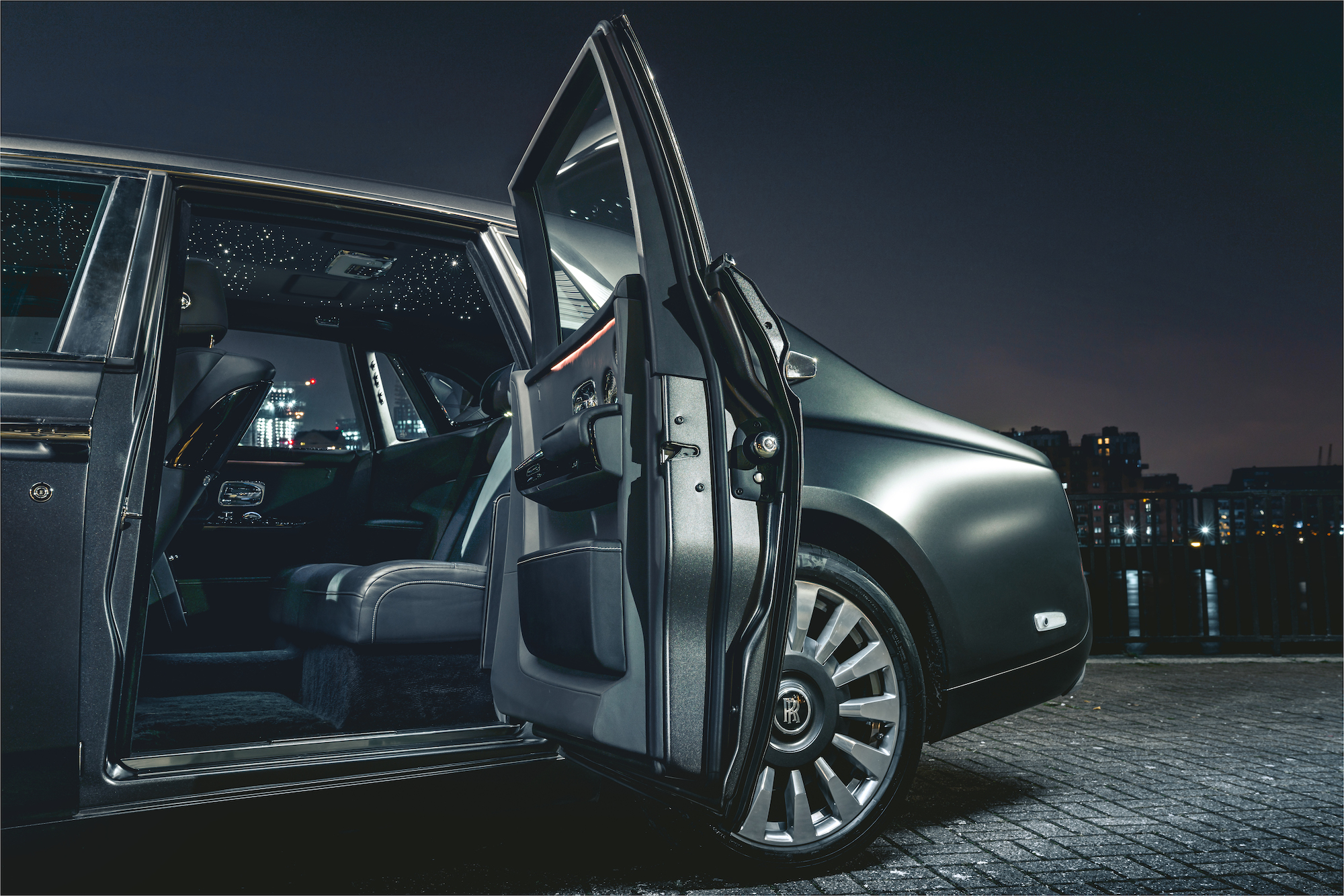

During our recent test drive opportunity with the amazing Rolls-Royce Ghost luxury sedan—a vehicle that feels like a condominium on wheels—the one feature that left passengers awestruck was the car’s Starlight Headliner.
Rolls-Royce has many attention-grabbing signature features, which include the power-operated doors, the rear-hinged rear doors for maximum accessibility to the back seat, the power-retracting “Spirit of Ecstasy” hood ornament (with built-in up-lighting, natch!), and that British Isle’s must-have item, the umbrellas built into the doors for convenient access when exiting directly onto a rainy tarmac. You know, your basic car stuff.
But it is the car’s headliner, the ceiling inside the mammoth sedan, that attracts the attention of anyone fortunate enough to crawl inside the car. The leather lining is perforated with between 1,400 and 1,600 holes that are hand-strung with fiber optic threads that, when illuminated, produce the effect of a star field inside the car.
The meticulous work by the craftspeople who hand build Rolls-Royce cars at the company’s Goodwood, England headquarters and factory trim each fiber’s end at a unique angle and fit it flush into the surface of the leather. The varying angles on the tips of the fibers create a twinkling effect for viewers, as the angle of the cut affects the direction of the light exiting the fiber.
[Related: The first Rolls-Royce SUV has tricks that might actually justify its price tag]
This mesmerizing feature debuted in a customized Rolls-Royce Phantom in 2006, when the client requested an 800-star headliner, and it was such a sensation that the Starlight Headliner is now standard equipment on Ghost models. Sun worshipers can specify a panoramic skylight instead, but most buyers choose the Starlight headliner, product manager Will Vetter reports.
Today’s headliner not only has at least twice as many stars as that first one—it has new capabilities and customized designs. A basic example takes the Rolls-Royce craftsperson at least nine hours of labor to create. Some of the additional stars represent an increase in the density of lights, but most of the added stars are there to fill the increase in the area covered by the synthetic star field.
“Originally it was really only focused on the back cabin,” notes Vetter. “It wasn’t the expanse that it is these days.”
Workers create the layout using a plexiglass template that indicates where the perforations should be for the optic fibers to shine through. They thread the hundreds of optical fibers in bundles, routing to between five and seven light modules that illuminate them.
[Related: Ford’s electric Mustang Mach-E is an important leap into the future]
Customers specify star fields such as the stars that would have been overhead the day they were born, their zodiac sign, popular constellations such as Ursa Major and Minor, a family coat of arms, or even a company logo.
Just as glare from the full moon spoils the view of stars at night in the outside world, so would a conventional overhead dome light ruin the effect of the Starlight Headliner. So Rolls-Royce employs the fiber optics to act as a virtual dome light, providing cabin illumination by turning up the brightness of all of them to bathe the car’s interior in all-encompassing light.
Additionally, areas of the “sky” stand in for reading lights and map lights, with localized brightness on request over specific seats in the car.
The newest innovation is a shooting star function that animates the sky scene with motion. The shooting star is created by a network of 24 path lines that animate the motion of a randomly appearing meteor that streaks across the sky. The shooting star can fly in either direction on its path, and it varies in brightness by using between one and four fibers to illuminate each star on the route. They can change the length of the fireball’s tail by using as many as five fibers to create a trailing effect, reports Vetter. There are 196 fibers dedicated to the shooting star effect.

Another dynamic star field effect is the continuous variability of the stars’ brightness, so they gently undulate in brightness and intensity to look more like they are shining through a turbulent atmosphere.
The company is continuing to experiment with still more ingenious modifications, like with its Collection cars such as “Tempus,” which features hand-painted images on the leather that go with a pulsar lighting effect. The company has pointed the way for alternative uses for the lighting with a customized Wraith coupe dubbed “Kryptos.” It employs the fiber optic lighting technology to put a printed circuit design onto the ceiling.

As Rolls-Royce executives frequently note, an economy car will deliver its occupants reliably to their destination, so the posh British brand has to deliver an experience rather than simple transportation. The reaction of our passengers during our weekend with the Ghost demonstrates convincingly that Rolls-Royce maintains its ability to astound people with its “surprise and delight” amenities.